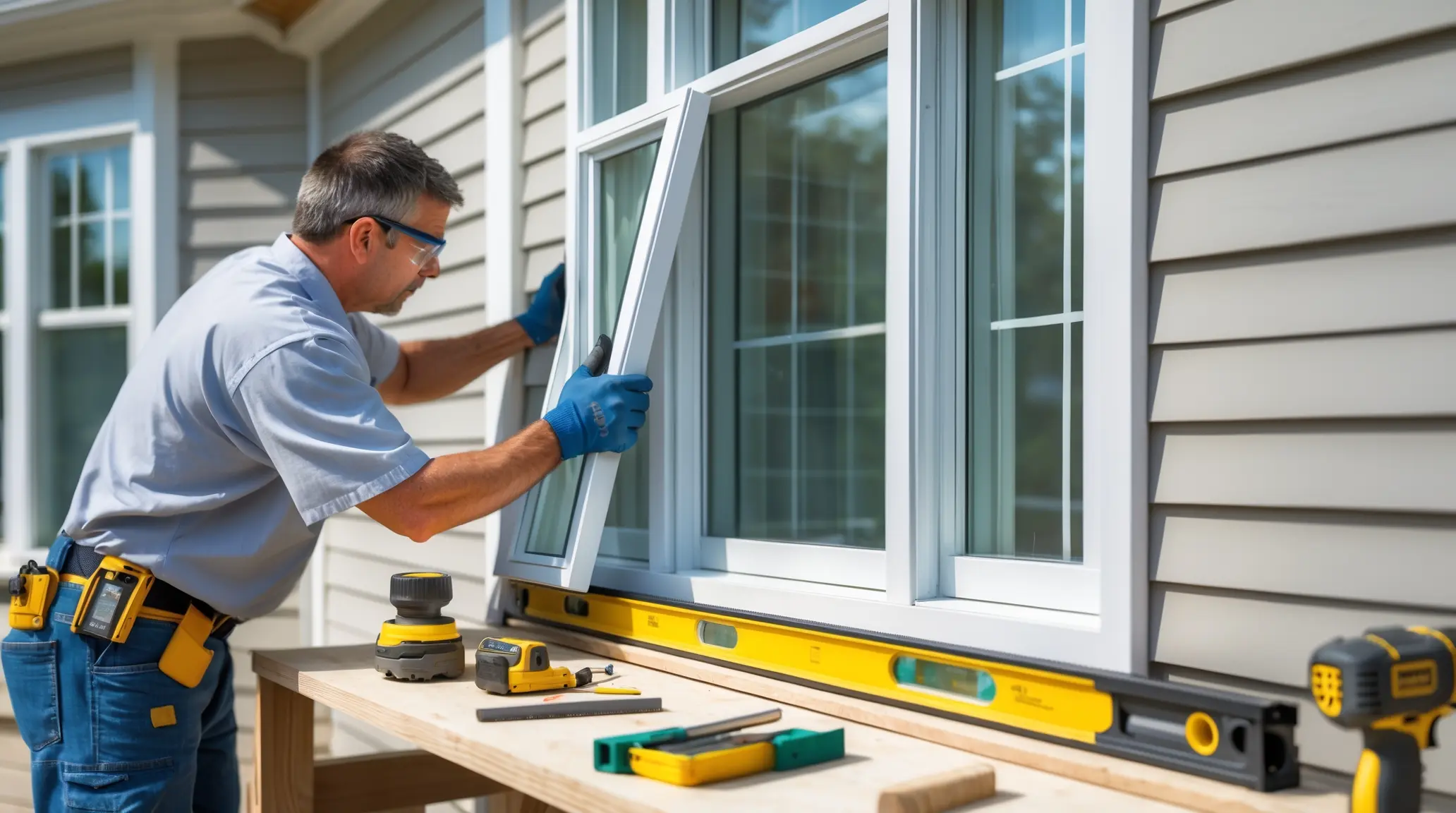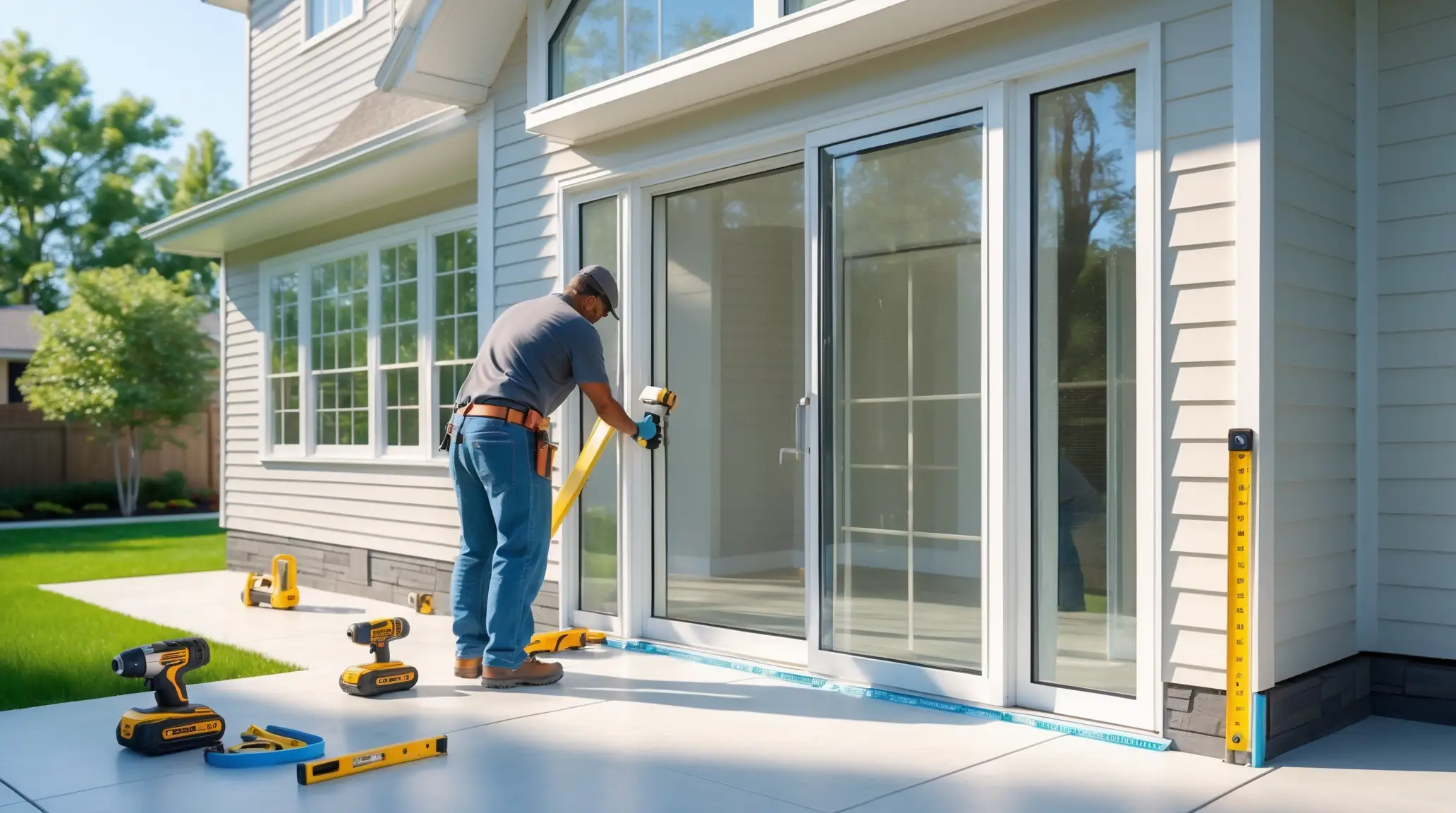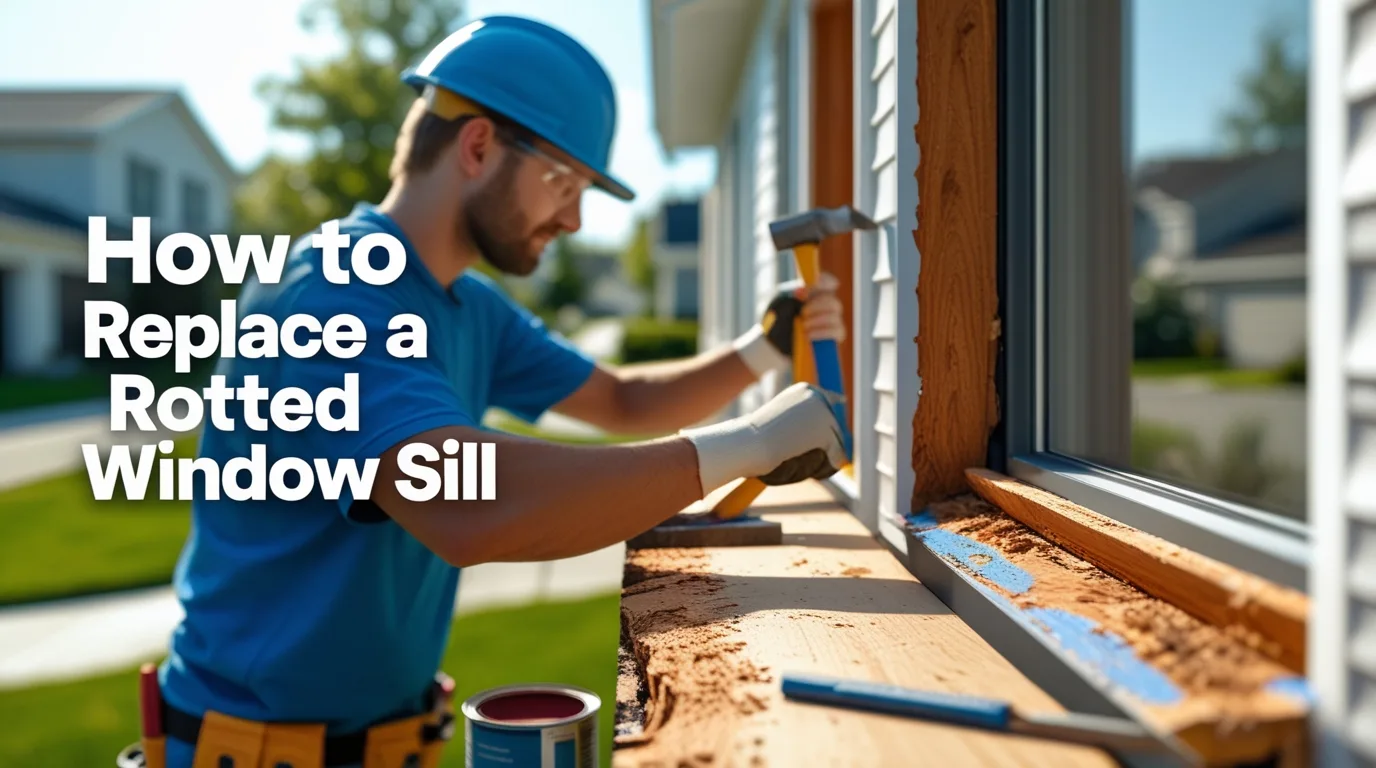When learning how to install window without nailing flange, it helps to understand why some windows are made without a flange in the first place. Many replacement and retrofit projects use non-flanged windows—also called flangeless, finless, or no flange windows because they can be installed without disturbing the home’s siding or outer finish. This guide from Austin Window Pros will walk you through what they are, when they’re used, and how to install them correctly so your windows last for years.
Understanding Window Installation Basics
Before you pick up any tools, it’s important to know the two main styles of window installation: flanged and flangeless.
- Flanged windows (also called nail fin windows) have a thin strip usually aluminum or vinyl attached around the frame. This flange is nailed or screwed to the wall studs before siding is applied. This method is common in new construction.
- Flangeless windows (non-flanged or no flange windows) do not have this strip. Instead, they’re held in place by fasteners that go through the sides of the frame into the wall structure. These are often used for replacement jobs, historic renovations, or where exterior siding can’t be removed.
Understanding this difference will help you choose the right method and materials for your project.
Why Some Windows Come Without Nailing Flanges
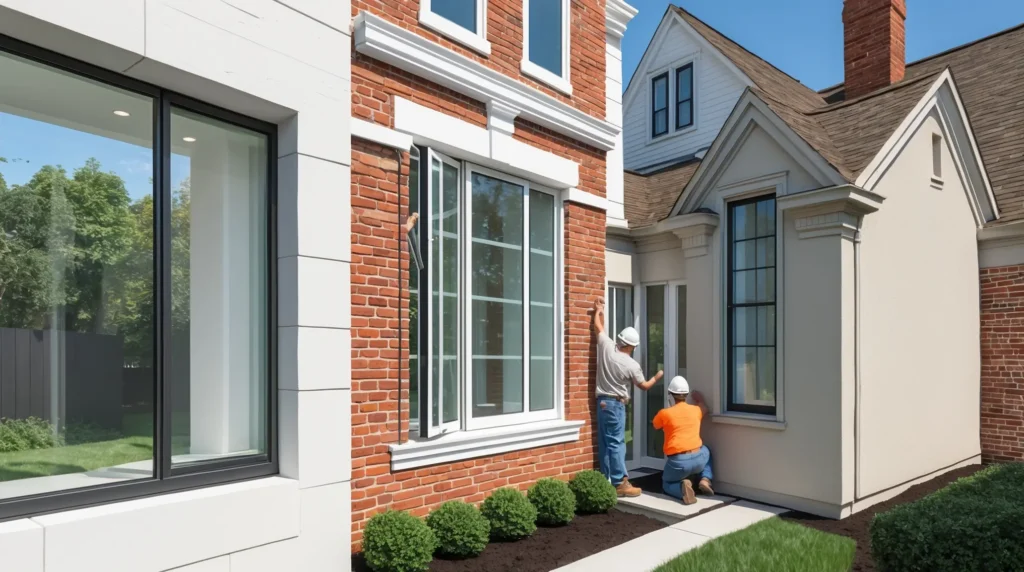
Not every home needs or benefits from windows with nailing fins. Here are some common reasons manufacturers and homeowners choose non-flanged windows:
- Retrofit and Replacement Projects – If you’re replacing windows in an existing home, removing the siding to install flanged units can be costly and time-consuming.
- Historic Homes – Many older houses have decorative trim, brick, or stone around the openings. Flangeless windows can fit without disturbing those details.
- Custom Designs – Some modern architects prefer the cleaner look of non-flanged windows, especially for large glass walls or commercial-style designs.
- Material Limitations – Certain wall finishes, like stucco or masonry, may make flange installation more difficult.
In short, windows without flanges are about flexibility. They give installers more options without major exterior changes.
What Is a Window Without a Nailing Flange?
A window without a nailing flange also called a finless window or non-flanged window is built without the protruding nail fin found on most new-construction units. Instead, the window frame has smooth sides, and the fasteners go directly through it into the building’s framing.
These windows often come with:
- Pre-drilled screw holes along the sides
- Integrated sealing channels for weatherproofing
- Flush edges for easier fitting into an existing frame
Without the flange, sealing becomes even more important. A proper bead of caulk, foam insulation, and flashing tape can help prevent air and water from sneaking in around the edges.
Pros and Cons of Flangeless Window Installation
Like most building choices, non-flanged windows have benefits and drawbacks.
Advantages:
- Easier installation without removing siding or exterior trim
- Great for retrofits and older homes
- Clean, minimal frame appearance
- Can be installed from the inside in certain cases
Drawbacks:
- Requires extra attention to sealing and waterproofing
- Less structural tie-in compared to a nailed flange
- Can be trickier to get perfectly square in the opening
By weighing these factors, you can decide whether a flangeless design fits your needs.
Preparing for Installing Windows Without Flange
Preparation can make or break your project. Here’s what you need:
Tools:
- Tape measure
- Level
- Screw gun or drill
- Shims
- Caulk gun
- Utility knife
- Pry bar (if removing old trim)
Materials:
- High-quality weatherproof caulk
- Flashing tape
- Insulation foam
- Screws appropriate for your wall material
Before you begin, check the opening for:
- Rot or water damage – Repair before installing.
- Proper size – Measure twice to ensure a snug but not forced fit.
- Clean edges – Remove old caulk, nails, or debris so the frame sits flat.
Step-by-Step Guide: How to Install Window Without Nailing Flange
- Measure the Opening – Write down width and height in three places each (top, middle, bottom). Use the smallest measurement for ordering.
- Dry Fit the Window – Set it in place without sealant to check fit and level.
- Apply Sealant – Run a continuous bead of caulk along the inside edges of the opening.
- Insert the Window – Center it in the opening, using shims to keep it square and plumb.
- Secure the Frame – Drive screws through the pre-drilled holes into studs or masonry anchors.
- Insulate Around the Frame – Fill gaps with low-expansion foam to block air leaks.
- Finish with Trim and Caulk – Replace interior or exterior trim, then run a final bead of caulk around all edges.
Following this process ensures a tight fit and good long-term performance.
Techniques for Installing a Window Without Nailing Flange in Older Homes
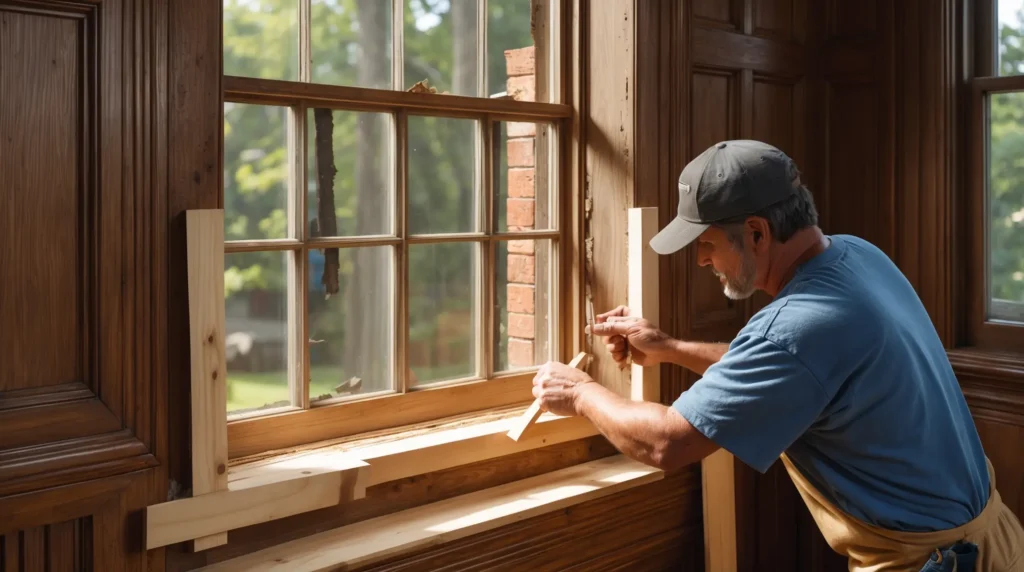
Older homes often have quirks uneven openings, decorative moldings, or settled walls. In these cases:
- Use more shims to correct for uneven sills or jambs.
- Inspect for rot around the sill plate and side framing before proceeding.
- Match trim carefully if replacing or repairing old woodwork.
- Add extra flashing tape for better moisture protection.
Patience is key. Rushing can lead to gaps or crooked placement, which is harder to fix later.
Common Mistakes to Avoid When Installing Window Without Nailing Flange
Even experienced DIYers can run into trouble. Avoid these pitfalls:
- Skipping the dry fit – This step ensures you won’t have surprises once caulk is applied.
- Over-tightening screws – Can warp the frame and prevent smooth operation.
- Using the wrong foam – High-expansion foam can bow the frame; use window-and-door-safe types.
- Poor sealing – Skipping flashing tape or skimping on caulk can cause leaks.
A careful installation saves headaches down the road.
Tips for Installing Jeld Wen Windows Without Nailing Fin
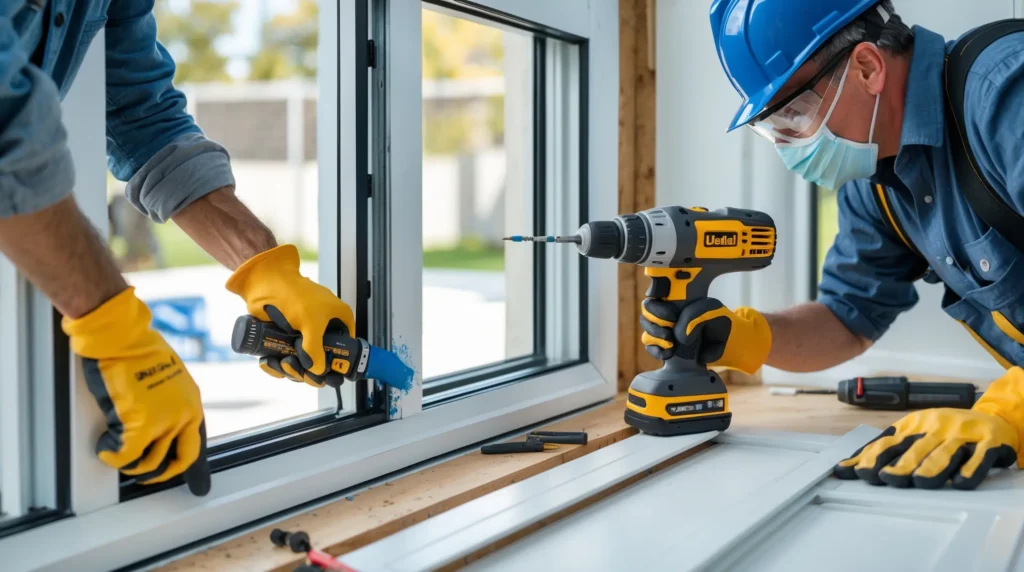
If you’re installing Jeld Wen or similar brands:
- Read their instructions first – Some have specific screw patterns to maintain warranty.
- Use matching sealants – Certain finishes need compatible caulks to prevent staining.
- Mind the glass weight – Larger units may need two people for safe handling.
- Protect the frame finish – Avoid scratching vinyl or aluminum surfaces during placement.
Following brand-specific advice ensures your window performs as designed.
When to Call a Professional for How to Install Window Without Nailing Flange in Austin
DIY is possible, but not always wise. Call a pro if:
- The opening is severely out of square
- You discover hidden water damage
- You’re working on a multi-story installation
- The window is unusually large or heavy
Austin Window Pros has the tools, skills, and experience to handle challenging installs, ensuring your home stays secure and energy efficient.
Final Thoughts on How to Install Window Without Nailing Flange
Installing non-flanged windows is a manageable project if you prepare carefully, use the right materials, and work methodically. From older home retrofits to modern custom builds, these windows offer flexibility and a clean look. By following the steps here and paying attention to sealing, you can enjoy durable, weather-tight results for years.
If you want your windows installed with precision and care, our team can help you select the best style and fit them perfectly—contact us today for expert service.

